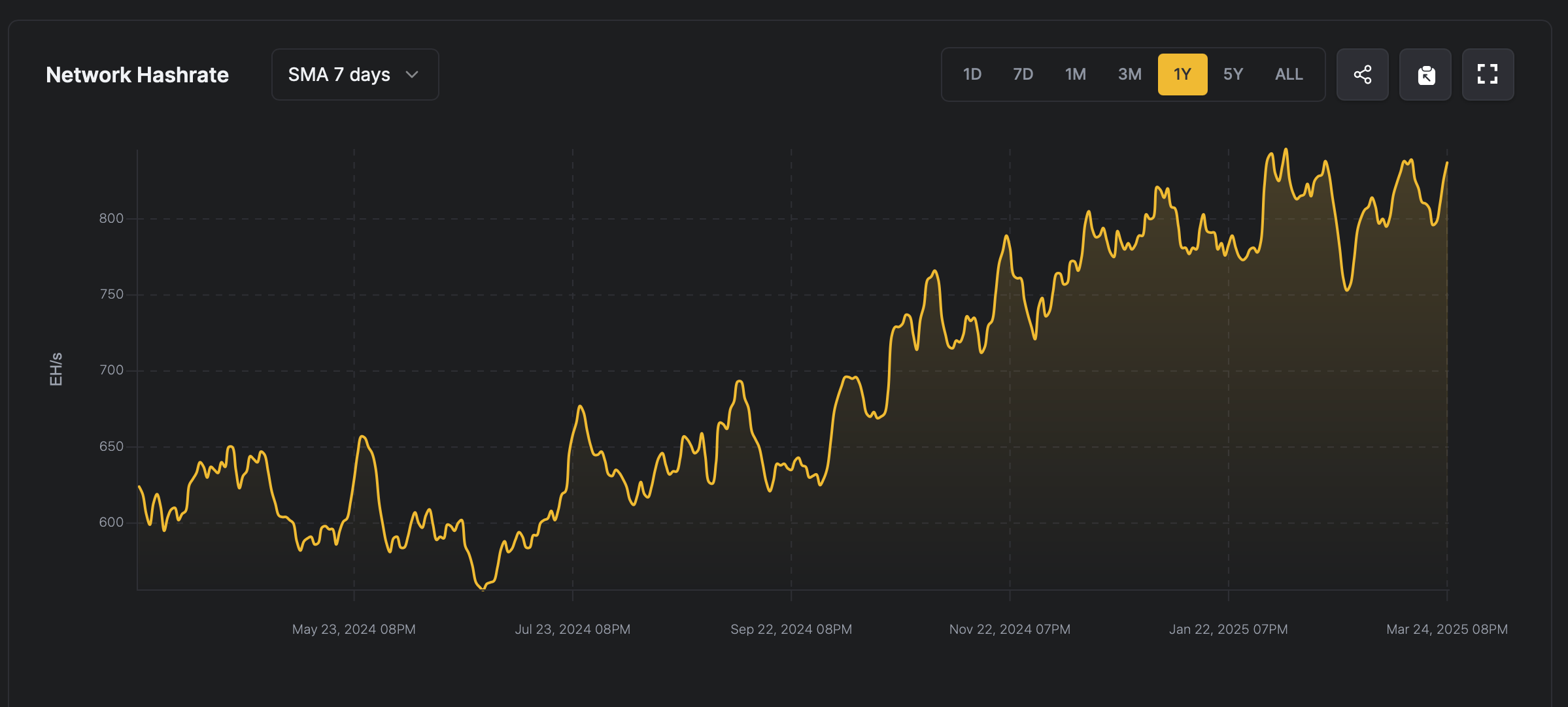Hashrate Nears Record High as Bitcoin Price Drives Mining Growth

Bitcoin's hashrate has been steadily increasing; over the past five days, the network has added 40 exahashes per second (EH/s), reaching 836 EH/s, which puts it close to the protocol's all-time high. Additionally, as the price of Bitcoin has risen, the hashrate, which reflects the estimated daily yield of one petahash per second (PH/s) of computing power, has also increased.
Bitcoin Miners Break Limits as Hashrate Approaches Max
On Tuesday, March 25, 2025, Bitcoin miners saw their revenues increase compared to the previous week. On March 18, the estimated value of one petahash per day was $46.21; today, it has risen to $49.57, according to data compiled by hashrateindex.com.
 Bitcoin hash rate, hashrate and average 24-hour block reward according to hashrateindex.com as of March 25, 2025.
Bitcoin hash rate, hashrate and average 24-hour block reward according to hashrateindex.com as of March 25, 2025.
The increase provided some relief to miners who faced tighter margins during the first three weeks of March. Data from mempool.space shows an increase in network activity, with 48,116 unconfirmed transactions in the mempool as of 6:30 p.m. ET on Tuesday.
 There are currently around 48,116 unconfirmed transactions in the mempool waiting to be confirmed. Source: mempool.space.
There are currently around 48,116 unconfirmed transactions in the mempool waiting to be confirmed. Source: mempool.space.
Transaction fees have also increased slightly. At the current rate of 31 satoshis per virtual byte (sat/vB), a high-priority transfer now costs $3.83. The recent rise in the price of BTC has been the main driver of the increase in revenue, as transaction fees accounted for only 2.14% of total revenue over the past 24 hours.
 Bitcoin fees have increased recently. Source: mempool.space.
Bitcoin fees have increased recently. Source: mempool.space.
Recent price changes have also pushed the hashrate up; the network has increased its hashrate by 40 EH/s, from 796 EH/s on March 20 to 836 EH/s today. This upward trend coincided with the 1.43% difficulty correction that occurred two days ago at block height 889,056.
The current mining difficulty level is 113.76 trillion, slightly below the all-time high of 114.17 trillion recorded six weeks ago at block height 883,008. The current network dynamics suggest a period of recalibration for miners balancing operating costs and revenues in the face of changing difficulty and prices.
 Bitcoin mining hashrate (7-day simple moving average) as of March 25, 2025 according to hashrateindex.com.
Bitcoin mining hashrate (7-day simple moving average) as of March 25, 2025 according to hashrateindex.com.
With transaction fees still playing a minor role in revenue, miners’ profitability appears to be increasingly dependent on the market value of BTC. As the protocol slowly approaches historical thresholds, participants may have to adapt their strategies to cope with tightening margins and changing network conditions.
On the other hand, advances in application-specific integrated circuit (ASIC) hardware may also help improve computing performance. Empirical analysis shows that fluctuations in the fiat price of Bitcoin accelerate corresponding adaptations in the network hashrate, manifesting themselves with a time lag of one to six weeks—a rhythm set by miners optimizing their operations in response to changing profit incentives.
Source: cryptonews.net



